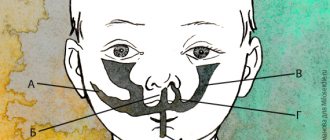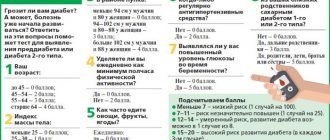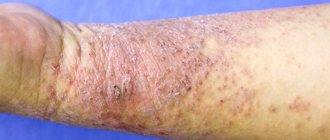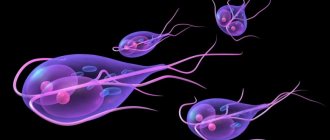Group I
Clinical examination is a comprehensive medical examination of the population, designed to identify diseases and risk factors, as well as a general assessment of the health status of citizens of the Russian Federation, including: examination of patients, laboratory tests, promotion of a healthy lifestyle and drawing the attention of citizens to the state of health of their body.
Persons under 18 years of age undergo medical examinations annually, and the majority of the adult population - once every three years, starting at established age periods (21, 24, 27, etc. until 39) and annually after 40 years.
In this article we will look at what health groups are distinguished based on the results of medical examination of adults and children, and how they differ.
Health groups for adults
Clinical examination is the main activity for research and monitoring of the health level of the adult population. Based on the information obtained as a result of the medical examination, the doctor or paramedic assigns each citizen a health group in accordance with the requirements and criteria defined in Order of the Ministry of Health of the Russian Federation dated March 13, 2021 N 124n “On approval of the procedure for conducting preventive medical examination and medical examination of certain groups of adults population"
The normative act distinguishes four health groups of the adult population - 1, 2, 3a and 3b.
I includes persons who do not have any chronic diseases, as well as risk factors for the development of such diseases, or who have the indicated risk factors with low or average absolute cardiovascular risk and who do not need clinical observation for other diseases (conditions). ).
The results of laboratory examinations of this group of people are within normal limits. As you might guess, this category includes citizens with the most favorable level of well-being.
Based on the results of the medical examination, preventive consultations and other therapeutic and health measures are carried out for people in this category, with the main goal of promoting a healthy lifestyle and compliance with sanitary and hygienic standards.
Group II
This category includes people who do not have any chronic diseases, but are at increased risk of acquiring them. In addition, this includes people who are predisposed to developing cardiovascular diseases. This group is the largest in number, which is associated with a large number of factors that negatively affect the human body (bad habits, poor diet, sedentary lifestyle, climate pollution, etc.).
This category of citizens is diagnosed by conducting a generally accepted standard health examination, as well as additional studies of individual risks, if any.
II includes citizens who have not been diagnosed with chronic non-infectious diseases, but have risk factors for the development of such diseases
- with high or very high absolute cardiovascular risk,
- as well as citizens who have been diagnosed with obesity and (or) hypercholesterolemia with a total cholesterol level of 8 mmol/l or more, and (or) persons
- smoking more than 20 cigarettes a day,
- and (or) persons with an identified risk of harmful alcohol consumption and (or) a risk of consuming narcotic drugs and psychotropic substances without a doctor’s prescription, and who do not need dispensary observation for other diseases (conditions).
Citizens with health group II with high or very high absolute cardiovascular risk are subject to dispensary observation by a doctor (paramedic) of a department (office) of medical prevention or a health center, as well as a paramedic of a paramedic health center or a paramedic-obstetric station, with the exception of patients with total cholesterol levels 8 mmol/l or more, which are subject to dispensary observation by a general practitioner.
For citizens with health group II, if there are medical indications, the general practitioner prescribes medications for medical use for the purpose of pharmacological correction of identified risk factors.
Group III (a and b)
Group IIIa includes persons suffering from chronic non-communicable diseases (CNCDs), which require dispensary observation and highly qualified medical care. The bulk of citizens in this category are people over 40 years old, whose ailments are directly related to age and aging of the body. Medical examination of such persons is carried out for the purpose of secondary prevention, namely to prevent complications and exacerbations of an existing disease.
Category III b includes persons who have not been diagnosed with chronic non-diseases, but who require the establishment of dispensary observation or the provision of specialized, including high-tech, medical care for other diseases, as well as citizens suspected of having these diseases who require additional examination.
Citizens with III a and III b are subject to dispensary observation by a general practitioner and medical specialists with preventive, therapeutic and rehabilitation measures.
Health groups for children
The health groups identified based on the results of clinical examination of the children's population differ significantly from those of adults. First of all, it is worth saying that there are as many as 5 categories for classifying children (as opposed to 3 for adults).
This amount is associated with the increased vulnerability of the child’s body to various diseases, which is why their clinical examination requires more attention and thoroughness, which ultimately leads to the receipt of a significant amount of information for classification into categories.
1 group
This category includes physically and mentally healthy children who have high body resistance to disease. They can also sometimes get sick, but at the time of examination they do not have any pathologies. In fact, group 1 includes children who are not sick at all, but in practice there are very few such children.
2nd group
This category includes children who do not suffer from chronic diseases, but have reduced immunity. Such babies can suffer acute infections several times a year, but nothing more. They are usually divided into several subgroups according to the type of risk. For example, category “A” includes children with problematic heredity, and “B” includes children at risk of developing chronic diseases.
3 group
Category 3 includes children with any chronic disease. However, patients in this category are distinguished by the fact that such a disease occurs in a state of compensation. This means that, despite the presence of pathology, the child does not face severe consequences or exacerbations of the disease and can lead a normal life.
4 group
This health category denotes children with chronic illnesses in the subcompensation stage. In this state, there is already a significant deterioration in well-being, disruption of the functioning of some organs and reduced body resistance. Such children often need constant treatment and rehabilitation, while their diseases are most often expressed in some kind of physical disability, and their neuropsychic development is normal.
5 group
This category includes children with serious chronic diseases in a state of decompensation. These are disabled children with severe developmental problems or reduced functionality. It is worth noting that diseases of this group are not always congenital. An absolutely healthy child after an illness, surgery or injury can receive group 5. Such children almost always require constant supervision and assistance.
Conclusion
Thus, health groups represent a scale by which the condition of the body, both an adult and a child, is determined.
Taking into account examinations by specialized specialists, the health group is determined by a pediatrician or therapist, who, in turn, carries out a comprehensive assessment of the condition of the human body.
Read also:
- Order of the Ministry of Health of the Republic of Kazakhstan dated December 30, 2015 No. 2158 “On conducting clinical examination of certain groups of the adult population of the Republic of Crimea in 2016”
- Stages of medical examination
- Regulatory acts
- Health groups for adults and children
- Clinical examination. Question answer
- Results of medical examinations and medical examinations in clinical hospital No. 1 for 9 months of 2016
- Working ahead. How medical examination improves health
- Results of medical examinations and medical examinations in KB No. 1 for 2021
- Why undergo medical examination if you feel healthy?
- Free medical examination of the population in 2021: what does it include and who has the right to undergo it?
- Complete information about medical examination
- Ministry of Health: medical examination allowed to increase the detection of cancer by 72%
- All-Russian medical examination has started
- Order of the Ministry of Health of Russia dated March 13, 2019 N 124n “On approval of the procedure for conducting preventive medical examination and medical examination of certain groups of the adult population”
- What diagnostic studies are carried out as part of medical examination at the first stage by age?
- What diagnostic studies are carried out as part of the medical examination at the second stage?
- Medical examination goals
The concept of "disabled"
A disabled person is a person who has a health impairment with a persistent disorder of body functions, caused by diseases, consequences of injuries or defects, leading to a limitation of life activity and necessitating his social protection (Article 1 of Federal Law 181).
The status of a disabled person (disabled child) is assigned by the Bureau of Medical and Social Expertise (MSE).
Main types of persistent disorders of body functions
- disturbances of mental functions (consciousness, orientation, intelligence, personality characteristics, volitional and incentive functions, attention, memory, psychomotor functions, emotions, perception, thinking, high-level cognitive functions, mental functions of speech, sequential complex movements);
- disorders of language and speech functions (oral (rhinolalia, dysarthria, stuttering, alalia, aphasia), written (dysgraphia, dyslexia), verbal and non-verbal speech; voice disorder);
- disturbances of sensory functions (vision, hearing, smell, touch, tactile, pain, temperature, vibration and other types of sensitivity, vestibular function, pain);
- disorders of neuromuscular, skeletal and movement-related (static-dynamic) functions (movements of the head, torso, limbs, including bones, joints, muscles; statics, coordination of movements);
- dysfunctions of the cardiovascular system, respiratory system, digestive, endocrine and metabolic systems, blood and immune systems, urinary function, skin function and related systems;
- disorders caused by physical external deformity (deformations of the face, head, torso, limbs, leading to external deformity; abnormal openings of the digestive, urinary, respiratory tracts; violation of body size).
Main categories of human life
These include the ability for self-care, independent movement, orientation, communication, the ability to control one’s behavior, the ability to learn, and the ability to work. Restrictions in each of these categories may be expressed to varying degrees.
I degree - persistent minor dysfunctions of the human body caused by diseases, consequences of injuries or defects, in the range from 10 to 30%;
II degree - persistent moderate impairment of the functions of the human body, caused by diseases, consequences of injuries or defects, in the range from 40 to 60%;
III degree - persistent pronounced impairment of the functions of the human body, caused by diseases, consequences of injuries or defects, in the range from 70 to 80%;
IV degree - persistent, significant impairment of the functions of the human body, caused by diseases, consequences of injuries or defects, in the range from 90 to 100%.
Assignment of a disability group
Based on these criteria, ITU assigns a disability group.
The first group is a violation of human health with IV degree of severity of persistent dysfunction (ranging from 90 to 100%), caused by diseases, consequences of injuries or defects.
The second group is a violation of human health with the third degree of severity of persistent dysfunction (in the range from 70 to 80%), caused by diseases, consequences of injuries or defects.
The third group is a violation of human health with the second degree of severity of persistent dysfunction (ranging from 40 to 60%), caused by diseases, consequences of injuries or defects.
The category “disabled child” is established if the child has II, III or IV degrees of persistent impairment of body functions (in the range from 40 to 100%), caused by diseases, consequences of injuries and defects.
ITU issues a certificate of disability (the original certificate of disability is kept by the parents) and an individual rehabilitation or habilitation program (IPRA).
The IPRA of a disabled child contains sections relating to medical, psychological-pedagogical, professional, social rehabilitation (or habilitation). The program also specifies technical rehabilitation aids and rehabilitation services (TCP).
What is the difference between the statuses?
The list of children belonging to the group of disabilities is not closed and, in addition, differs significantly from the limitations in life activity on the basis of which disability is established. A student with disabilities is a student who needs to create special conditions to receive, first of all, a high-quality accessible education. For example, a visually impaired child may have a disability status, since he needs special technical devices (magnifying glasses, etc.) and aids for studying at school. Moreover, such a child does not have such limitations in life activity that would qualify him or her as disabled.
Not every disabled child requires special accommodations to receive an education. For example, a child diagnosed with diabetes mellitus has the status of “disabled”, but he does not need special educational conditions. Therefore, he does not have the status of “student with disabilities.” In this case, he receives rehabilitation services not in education, but in other areas (health care, social protection).
At the same time, the same student can be both a disabled person and a person with disabilities. For example, a deaf child receives the status of “disabled” (the parents have an ITU certificate of disability and IPRA), as well as the status of “student with disabilities” (they have a PMPC conclusion).
In this case, the section of the IPRA devoted to educational rehabilitation and the conclusion of the PMPC should contain wording identical to the conclusion of the PMPC.
To differentiate the terms “HIV” and “disability”, a draft amendment to Federal Law-273 is currently being developed. The bill includes the category of disabled people (disabled children) in the category of students with disabilities if they have a PMPK conclusion on the need to create special conditions for receiving education.
The concept of “disability”
A student with disabilities is an individual who has deficiencies in physical and (or) psychological development, confirmed by a psychological, medical and pedagogical commission and preventing them from receiving education without the creation of special conditions (Article 2 of Federal Law-273).
The status of a child with disabilities is assigned by the Psychological, Medical and Pedagogical Commission (PMPC).
The PMPK includes: a teacher-defectologist (teacher of the deaf, teacher of the deaf), a teacher-speech therapist, an educational psychologist, a social educator, a psychiatrist, and a neurologist.
The group of persons with disabilities (Article 79 of Federal Law-273) includes children with hearing impairments, vision impairments, severe speech impairments, musculoskeletal disorders, autism spectrum disorders, mental retardation, mental retardation and others. There is no exhaustive list of diseases in the presence of which students are recognized as persons with disabilities.
The category “student with disabilities” is defined not from the point of view of health limitations themselves, but from the point of view of the need to create special conditions for receiving education, based on the decision of the collegial body - PMPK.
PMPC recommendations
The PMPK decides to issue a conclusion collectively, taking into account the special educational needs of students and the individual development situation. The conclusion reflects the following data:
— the presence/absence of the need to create conditions for the child to receive an education, correction of developmental disorders and social adaptation based on special pedagogical approaches (does the child need to be accompanied by specialists in psychological and pedagogical profiles, medical supervision);
— PMPC recommendations for creating special conditions for teaching and raising a child on the basis of an educational organization (defining the educational program, the need for architectural accessibility, the need to be accompanied by an assistant (assistant), the need to be accompanied by a tutor, special conditions for passing the State Examination, as well as recommendations on the necessary areas of correctional developmental work of specialists and the period for re-passing the PMPC).








